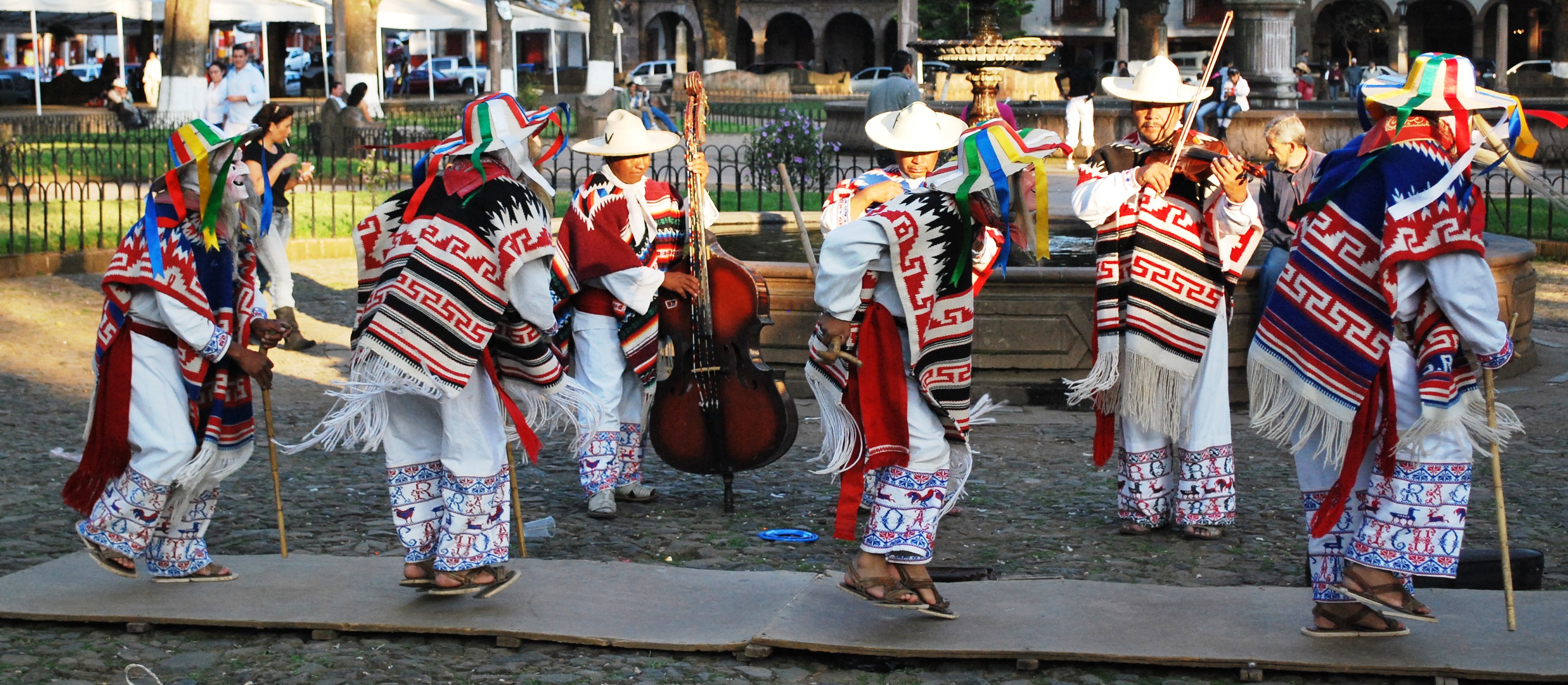Danza de los Viejitos on:
[Wikipedia]
[Google]
[Amazon]
 The Danza de los viejitos ( es, Dance of the little old men) is a traditional folk dance in
The Danza de los viejitos ( es, Dance of the little old men) is a traditional folk dance in



 The music consists of 3 instruments.
*
The music consists of 3 instruments.
*
Image:Danza_de_los_Viejitos1.jpeg, Danza de los Viejitos
File:Danza de los viejitos2.ogg, Video of Danza de los viejitos, from Michoacán, México
File:Danza de los viejitos.ogg, Video of Danza de los viejitos continued, from Michoacán, México
 The Danza de los viejitos ( es, Dance of the little old men) is a traditional folk dance in
The Danza de los viejitos ( es, Dance of the little old men) is a traditional folk dance in Michoacán
Michoacán, formally Michoacán de Ocampo (; Purépecha: ), officially the Free and Sovereign State of Michoacán de Ocampo ( es, Estado Libre y Soberano de Michoacán de Ocampo), is one of the 32 states which comprise the Federal Entities of ...
, Mexico
Mexico (Spanish: México), officially the United Mexican States, is a country in the southern portion of North America. It is bordered to the north by the United States; to the south and west by the Pacific Ocean; to the southeast by Guatema ...
.
Origin
The ''Danza de los Viejitos'' is said have begun as a dance in the Mexican State of Michoacán in the Purépecha Region. The men that perform this dance are known as ''Danzantes'' or "Dancers." This dance was performed by four men that represent fire, water, earth, and air. Four dancers are also believed to be the correct number to dance in this traditional performance because there are four colors that make corn which is red, yellow, white, and blue. The dancers ask El Dios Viejo (The Old God) for good harvest, communication with spirits, and to learn about the past or to predict the future. Immigrants from Michoacan in Long Prairie Minnesota, U.S.A. danced this dance at the town's Cinco de mayo celebration in the first decade of the 21st century.Clothing
A Danzante wears a top and bottom made out of a white blanket. It is topped with a "sarape
The serape or jorongo is a long blanket-like shawl/cloak, often brightly colored and fringed at the ends, worn in Mexico, especially by men. The spelling of the word sarape (or zarape) is the accepted form in Mexico and in other Spanish-spea ...
," which is a blanket worn as a cloak in Latin America. Each sarape contains different designs and colors. They wear a hat made out of straw with adorned lengthy pieces of ribbon, each one a different color. The ribbon is parted down the middle of the hat, each one hanging 10 cm on the sides. Their shoes are sandals that have a wooden sole in order to make a tapping noise throughout their dance, followed by a wooden cane they also use. The dancers also wear a mask made out of either wood, cornstalk paste, or clay with an elderly man's face painted on it.


Music
Violin
The violin, sometimes known as a ''fiddle'', is a wooden chordophone (string instrument) in the violin family. Most violins have a hollow wooden body. It is the smallest and thus highest-pitched instrument (soprano) in the family in regular ...
* Clarinet
The clarinet is a musical instrument in the woodwind family. The instrument has a nearly cylindrical bore and a flared bell, and uses a single reed to produce sound.
Clarinets comprise a family of instruments of differing sizes and pitches ...
* Guitar
The guitar is a fretted musical instrument that typically has six strings. It is usually held flat against the player's body and played by strumming or plucking the strings with the dominant hand, while simultaneously pressing selected stri ...
Gallery
References
Further reading
*Hellier-Tinoco, Ruth. ''Embodying Mexico: Tourism, Nationalism & Performance''. New York: Oxford University Press 2011. Mexican culture Arts in Mexico Ritual dances Native American dances Articles containing video clips {{Mexico-stub